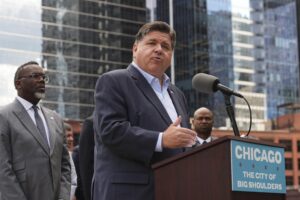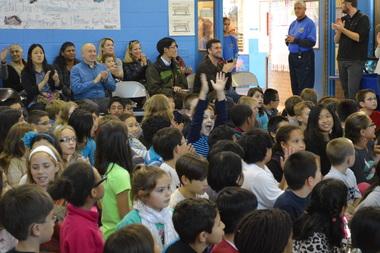Chicago’s Public Schools Face Critical Challenges Amidst Declining Enrollment and Underused Facilities
Widespread Underutilization Highlights Inefficiencies in Chicago’s School Infrastructure
Over the past decade, Chicago’s public education system has encountered a significant mismatch between its physical infrastructure and student population. Numerous school buildings, originally constructed to accommodate thousands, now operate with only a small fraction of their intended enrollment. As an example, some schools designed for 1,000 students currently serve fewer than 100, reflecting utilization rates below 10%. This imbalance not only burdens the district’s finances but also compromises the quality of education by stretching resources thin and limiting extracurricular and enrichment opportunities.
Several factors contribute to this persistent inefficiency:
- Legacy zoning regulations that no longer align with shifting neighborhood demographics
- Strong resistance from communities and political leaders against school closures or mergers
- Financial resources disproportionately allocated to maintaining underused buildings rather than enhancing classroom experiences
- Insufficient strategic planning at the district level to manage school capacities effectively
| School Category | Capacity | Current Enrollment | Utilization Percentage |
|---|---|---|---|
| Elementary Schools | 800 | 150 | 18.75% |
| Middle Schools | 600 | 120 | 20% |
| High Schools | 1,000 | 200 | 20% |
Economic and Educational Consequences of Maintaining Underpopulated Schools
Chicago’s underfilled school buildings represent a significant financial strain on the city’s education budget. Operating a facility designed for 1,000 students with only 100 enrolled results in disproportionately high maintenance costs, including utilities, repairs, and security. These fixed expenses consume funds that could otherwise be invested in improving classroom resources, increasing teacher pay, or expanding student programs. The ripple effects extend beyond the schools themselves, as neighborhoods with underutilized schools often experience declining property values and reduced economic vitality, further entrenching social inequities.
From an academic standpoint, the impact is equally troubling.While smaller class sizes might appear beneficial, many of these schools lack the breadth of programming and extracurricular activities necessary to engage students fully. This deficiency can dampen student motivation and contribute to higher dropout rates and lower academic achievement. The table below illustrates the inefficiencies in resource allocation for a school operating at 10% capacity:
| Expense Category | Budget for Full Capacity (1,000 Students) | Actual Spending (100 Students) | Percentage of Waste |
|---|---|---|---|
| Facility Maintenance & Utilities | $500,000 | $400,000 | 80% |
| Staffing & Administration | $1,200,000 | $800,000 | 33% |
| Academic Programs | $300,000 | $120,000 | 60% |
- High fixed operational costs that do not decrease proportionally with fewer students
- Reduced funding for academic enrichment due to budget diversion
- Economic stagnation in communities surrounding underused schools
Challenges Hindering the Closure and Repurposing of Underused Schools
Despite clear evidence of under-enrollment, attempts to shutter or repurpose nearly vacant schools in Chicago encounter formidable obstacles. Long-standing residents often resist closures, fearing the loss of neighborhood identity and community cohesion. Politicians, wary of alienating voters who view local schools as vital community pillars, frequently avoid endorsing closures. This political and social resistance results in prolonged operation of inefficient facilities, draining resources without adequately serving students.
Beyond social and political factors, logistical and legal complexities further complicate the process.The Chicago Public Schools system faces high costs associated with relocating students and staff, alongside contractual and regulatory constraints that slow decision-making. Additionally, unpredictable demographic trends make it challenging to forecast future enrollment, causing hesitation in committing to closures. Key barriers include:
- Community Resistance: Emotional attachments fuel campaigns to keep schools open
- Political Reluctance: Officials avoid closures to preserve electoral support
- Financial Limitations: High expenses for building repurposing or demolition
- Legal and Contractual Hurdles: Union agreements and policies restrict swift action
- Uncertain Demographic Projections: Fluctuating population trends complicate long-term planning
| Barrier | Effect on School System |
|---|---|
| Community Resistance | Prolonged delays in school closures |
| Political Reluctance | Limited policy initiatives for consolidation |
| Financial Limitations | Restricted funding for redevelopment projects |
| Legal and Contractual Hurdles | Slowdowns due to negotiations and compliance |
| Uncertain Demographic Projections | Risk of premature or ill-timed closures |
Strategic Policy Solutions to Enhance Resource Efficiency and Address Enrollment Imbalances
To effectively tackle the ongoing under-enrollment crisis, Chicago’s education leaders must pursue extensive reforms focused on resource optimization. Consolidating schools with critically low attendance can reduce operational expenses and free up funds to enhance academic offerings and facility improvements in higher-demand schools. Investing strategically in technology, specialized curricula such as STEM or arts integration, and professional development for educators can revitalize programs and attract families back to public schools. Additionally,forging partnerships with local businesses and community organizations can enrich educational experiences and provide vital support services.
Ensuring equity throughout this process is paramount to avoid disproportionately impacting marginalized communities. Recommended strategies include:
- Utilizing robust, data-driven enrollment forecasting to guide planning decisions
- Reforming zoning policies to offer families more school choice while managing capacity effectively
- Encouraging innovative programming in schools at risk of closure to boost engagement
- Maintaining obvious communication and involving stakeholders at every stage to build trust
| Policy Initiative | Anticipated Benefit |
|---|---|
| School Consolidation | Reduced costs and improved resource allocation |
| Flexible Zoning | More balanced student distribution across schools |
| Specialized Academic Programs | Higher student engagement and retention |
| Community Collaboration | Expanded support networks and enriched learning environments |
Conclusion: Navigating the Future of Chicago’s Public Schools Amid Enrollment Decline
The reality of Chicago’s underpopulated schools reveals a multifaceted challenge involving policy inertia, community dynamics, and fiscal pressures. As enrollment continues to decline,the city must confront the sustainability of maintaining vast educational infrastructures that serve only a fraction of their capacity. Without proactive, transparent, and strategic interventions, the inefficiencies and disparities within the public school system are likely to worsen, jeopardizing educational quality and equity for future generations. Addressing these issues head-on is essential to fostering a resilient and effective public education system in Chicago.








